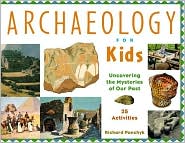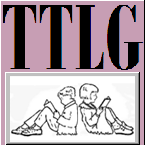The Database Of All The Reviews
Archeology for kids: Uncovering the Mysteries of Our Past
Richard Panchyk
Non-Fiction (Series)
Ages 12 and up
Chicago Review Press, 2001, 1-55652-395-5
For those of us who have never worked as an archeologist, archeology may seem like a pretty simple business. In actual fact it is quite complicated. There are “eight basic steps to archeology” and if you can understand how they work then you will “discover how archeology works.”
First you have to decide what it is you want to find. In other words you need to have a goal. For example Howard Carter knew that he wanted to find the tomb of Tutankhamun. Once that goal has been decided upon you need to do your research. You have to gather as much information as you can about your subject. Then you will need to raise money to pay for your project. Archeological excavations are expensive and you are going to need funding to pay for your equipment, your staff, and everything else. Next you need to select your site. To do this a survey will be necessary. Sometimes a surface survey is enough but sometimes an aerial survey is required. Once the site is selected you will do some testing “to pinpoint the best location to excavate.” Only after this is done will you begin the full blown excavation. During and after the excavation you will need to do dating and analysis, and finally your finds will need preservation.
Now that we know the eight basic steps we can look at some of the most famous archeological discoveries that have been made. The author begins with the stories of prehistoric sites, sites that were occupied by our apelike ancestors who lived two and a half million years ago, and the first humans who came after them in 45,000 B.C. He then goes on to explore the worlds of the Ice Age and New Stone Age peoples, looking at their cave dwellings, their tools, their pottery, and the stone tombs that they constructed.
This period was followed by the “First Civilizations” – the Egyptians, the Sumerians, the Babylonians, the Chinese dynasties, Greece, and Rome. Not to be forgotten are the Aztecs, Inca and Mayan civilizations in the New World.
The author concludes his deeply interesting and very thorough narrative with a section on “Historical Archeology,” in other words archeology which explores more modern mysteries. For example there are archeologists who specialize in the America Civil War, or Revolutionary France. Though these periods did not take place that long ago they are still fascinating and have a lot to offer an archeologist.
What is particularly engaging about this book is that it not only provides young readers with a great deal of information and excellent background material, but it also has twenty-five activities which are engaging, educational and cleverly crafted to keep the young reader interested in the subject. The activities include dating coins, making footprints, learning how to make fire with flints, making an oil lamp, and making a time capsule.
Carefully researched and very well written, packed with supplemental informational boxes, and full of annotated illustrations and photographs, this is an excellent book to show young people what the world of archeology is all about.


An Online Children’s Book Review Journal
Through The Looking Glass Children’s Book Reviews
Online book reviews for the child in your life featuring both new and popular children's book authors

Kids book reviews, including book reviews of chapter books, novels, picture books, and non-fiction from famous children’s literature authors. Your review site of books for children.
Welcome to Through the Looking Glass Book Reviews. We have moved! Please visit the new site at www.lookingglassreview.com to enjoy the new website.


